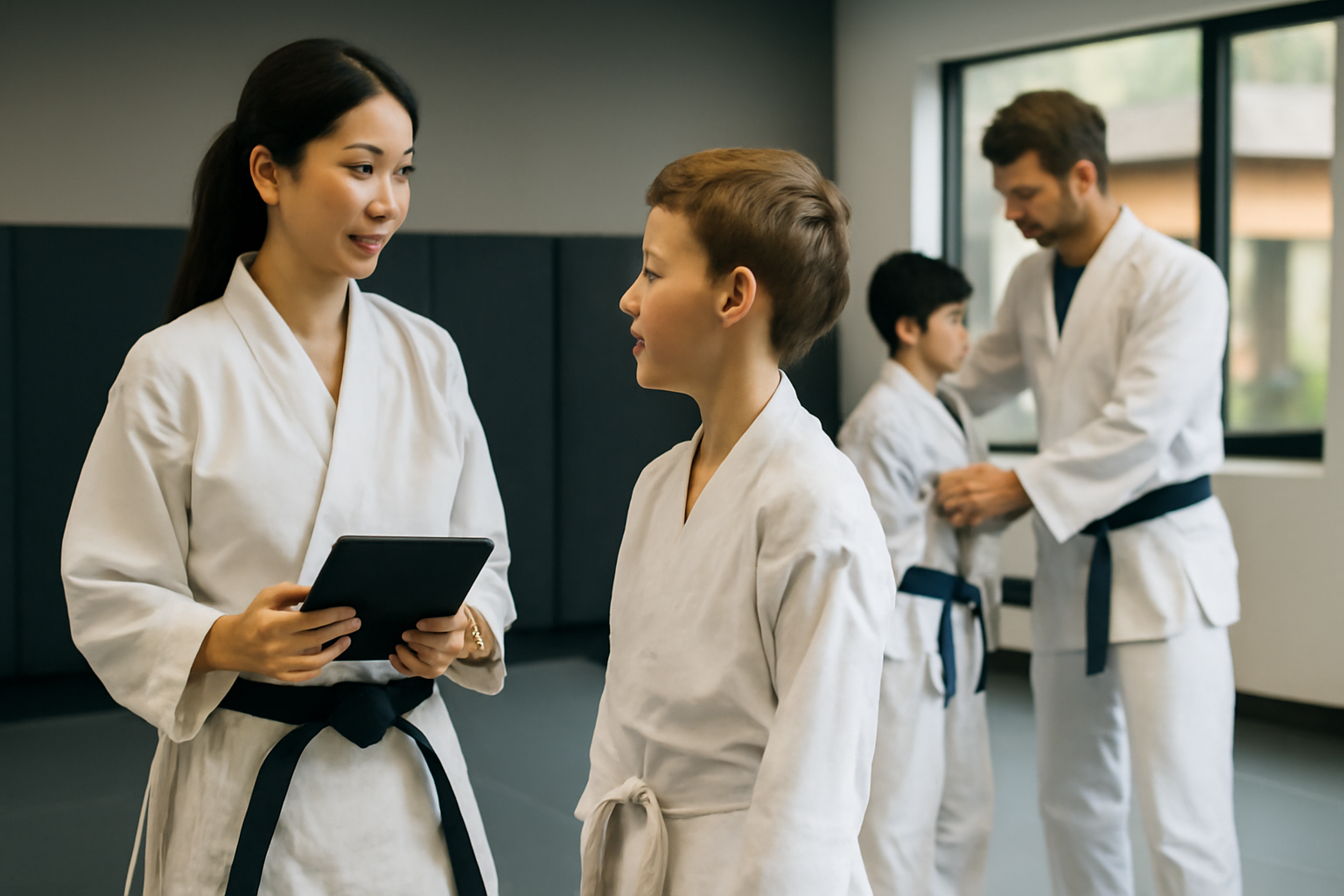Reduce student dropout rates in your martial arts school

One of the biggest challenges martial arts schools face is maintaining consistent student engagement and reducing dropout rates. Losing students means not only lost revenue but also a disruption to the training environment for the entire community.
If you want to reduce martial arts school dropouts, it’s crucial to implement effective strategies that keep your students motivated, track their progress, and provide them with the support they need to stay committed.
In this blog, we’ll explore how you can improve student retention, enhance your training environment, and foster a sense of community that keeps your students coming back week after week.
Reduce Martial Arts School Dropouts with Effective Strategies
1. Implement a Comprehensive Student Tracking System
Tracking student progress is a powerful way to reduce martial arts school dropouts. By monitoring their growth, performance, and achievements, you create an environment that encourages continuous improvement and motivates students to stay committed to their training.
Tip:
- Use student management software like Zen Planner to track attendance, belt progress, and skill achievements. This allows both instructors and students to visualize their improvement and set goals to keep progressing.
Example:
- Set milestone tracking for students as they approach a new belt level. Celebrate their achievements along the way to maintain excitement and momentum.
2. Create a Personalized Retention Plan for Each Student
Every student has different reasons for training in martial arts, and their individual needs and goals should be acknowledged. Developing a retention plan tailored to each student’s aspirations can make a significant difference in their likelihood of staying engaged.
Tip:
- Have one-on-one conversations with students to understand their personal goals and challenges. Use this information to craft personalized retention strategies that speak to their unique motivations.
Example:
- A student who is working towards a black belt might benefit from a structured training schedule, while a younger student might need more encouragement and fun, interactive lessons to keep them engaged.
3. Foster a Strong Sense of Community
Martial arts schools thrive on the sense of community they create. Students who feel like they’re part of a family are less likely to drop out. To reduce martial arts school dropouts, it’s important to foster an inclusive environment where every student feels welcomed and valued.
Tip:
- Organize social events, group activities, or friendly competitions that allow students to connect outside of class. A strong sense of belonging increases commitment and engagement.
Example:
- Host a student appreciation event every few months where families can join in the celebration of achievements. This can help build loyalty to your school and encourage long-term participation.
4. Offer Flexible Class Schedules and Payment Options
Life gets busy, and your students’ schedules may change over time. Offering flexible class schedules and payment plans is a great way to reduce martial arts school dropouts. If students feel that they can’t fit their training into their lives, they’re more likely to quit.
Tip:
- Provide options for students to choose from, whether it’s evening classes, weekend sessions, or more lenient payment plans. Flexibility ensures that students can continue training without added stress.
Example:
- Offer “pay-as-you-go” options or discounted packages for students who sign up for long-term training, making it easier for them to stay committed financially.
5. Set Realistic and Achievable Goals
Setting goals is essential for keeping students engaged. When students can see that they are making progress towards their goals, they are more likely to stay motivated and invested in their martial arts journey.
Tip:
- Break down larger goals (like earning a new belt) into smaller, manageable milestones. Track their progress and celebrate each achievement to encourage continued participation.
Example:
- A student working toward a black belt might start with mastering specific techniques or completing a certain number of classes. Every time they hit a small target, they feel a sense of accomplishment.
6. Incorporate Regular Feedback and Communication
Frequent communication with your students ensures that they feel heard and supported. Students who are regularly checked in with are less likely to feel forgotten or neglected, which can lead to dropout.
Tip:
- Set up a system for regular feedback and check-ins, either through email, SMS, or in-person meetings. This allows you to address any concerns early on and maintain open communication.
Example:
- After each month, send a personalized email or text to students highlighting their progress and encouraging them to continue their training. Let them know that you’re invested in their success.
7. Offer Incentives and Rewards for Progress
People love rewards, and offering incentives for achieving milestones can be a great way to reduce martial arts school dropouts. Rewards can motivate students to push through challenges and stay on track toward their goals.
Tip:
- Offer small rewards for achieving certain milestones, such as earning a new belt, attending a certain number of classes, or participating in a tournament. Rewards could be anything from a certificate of achievement to a free class or special recognition.
Example:
- For each belt level achieved, offer students a “graduation” certificate or a small celebration in class, which acknowledges their hard work and keeps them motivated.
8. Encourage Parent Involvement in the Process
For younger students, parental involvement can be a major factor in retention. By involving parents in their child’s martial arts journey, you can help ensure that they continue their training.
Tip:
- Keep parents informed about their child’s progress and involve them in setting goals. Regularly check in with them to see if they have any concerns.
Example:
- Organize parent-child martial arts events where parents can see their children’s progress and interact with instructors.
9. Make Learning Fun and Engaging
While martial arts is a disciplined practice, students, especially children, thrive in an environment that’s both fun and educational. If your classes are too repetitive or rigid, students may lose interest and drop out.
Tip:
- Incorporate games, challenges, and varied drills into your lessons to keep things exciting and engaging. This ensures that students look forward to each class and continue training.
Example:
- Use fun challenges like a “belt progression race” where students can earn points for different skills they master, adding an element of competition and excitement.
10. Regularly Evaluate and Adjust Your Retention Strategy
As your martial arts school grows, it’s important to regularly evaluate your retention strategies. Student tracking tools can help you analyze patterns in attendance, engagement, and dropout rates. This allows you to continuously improve your retention efforts.
Tip:
- Review student progress regularly using your student management software. If you notice trends or areas where students tend to drop off, adjust your approach to address these issues.
Conclusion
By implementing a comprehensive student tracking system, personalizing retention plans, fostering a sense of community, and offering flexibility, you can significantly reduce martial arts school dropouts. Engaged students are more likely to stick with their training, improve their skills, and remain loyal to your school.
Ready to boost retention and reduce dropouts at your martial arts school?
Zen Planner provides the tools you need to track student progress, create personalized retention plans, and engage your members effectively. Book a Demo today to see how our software can support your school’s growth and retention efforts.







